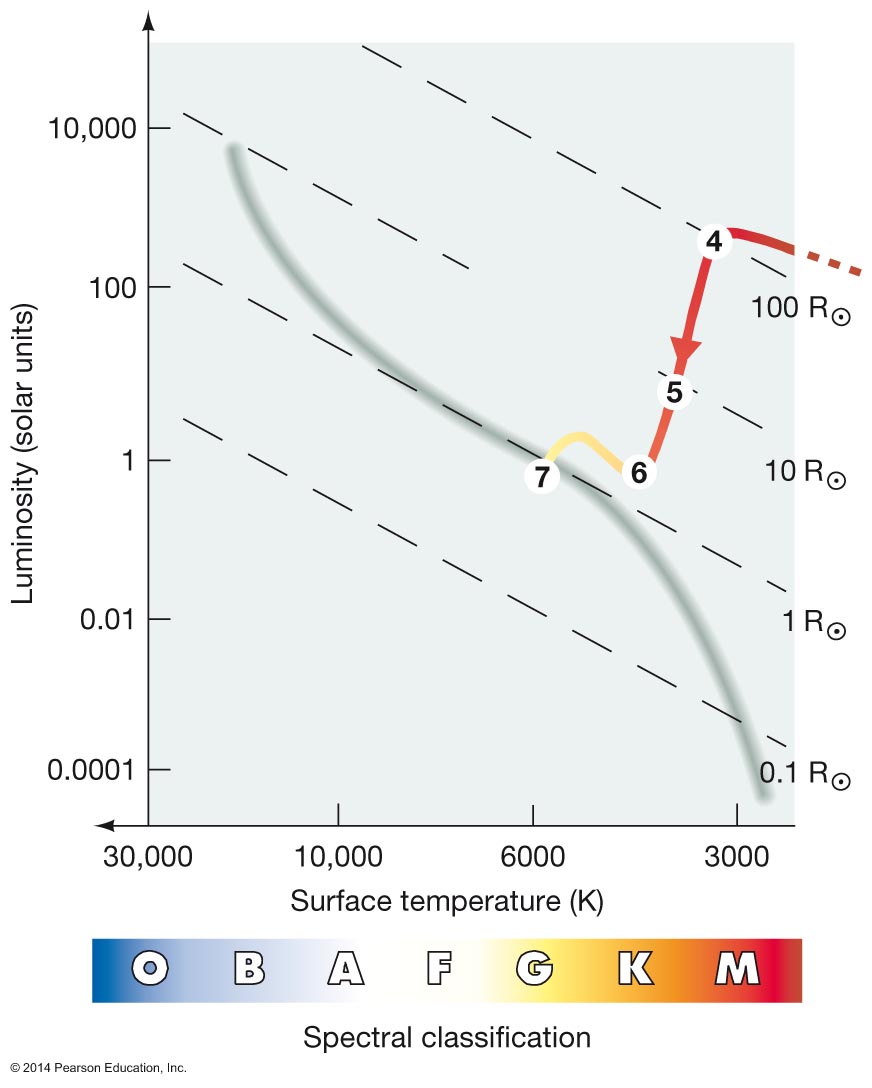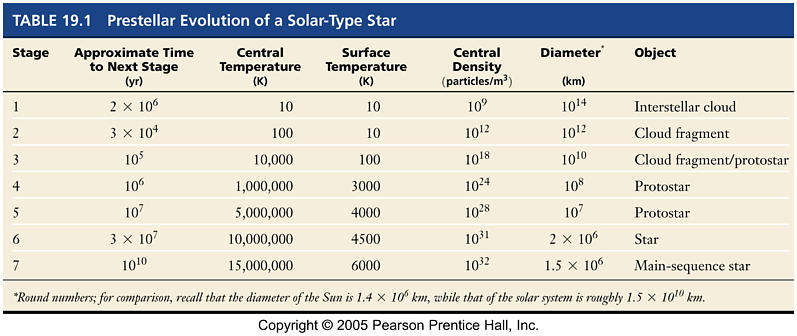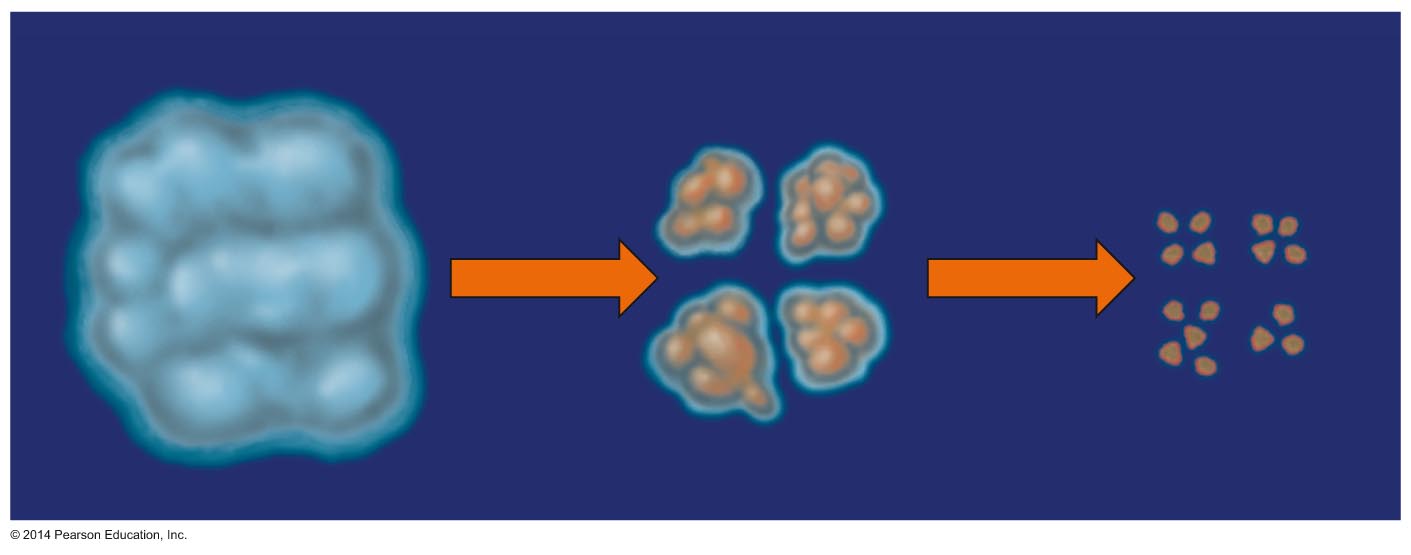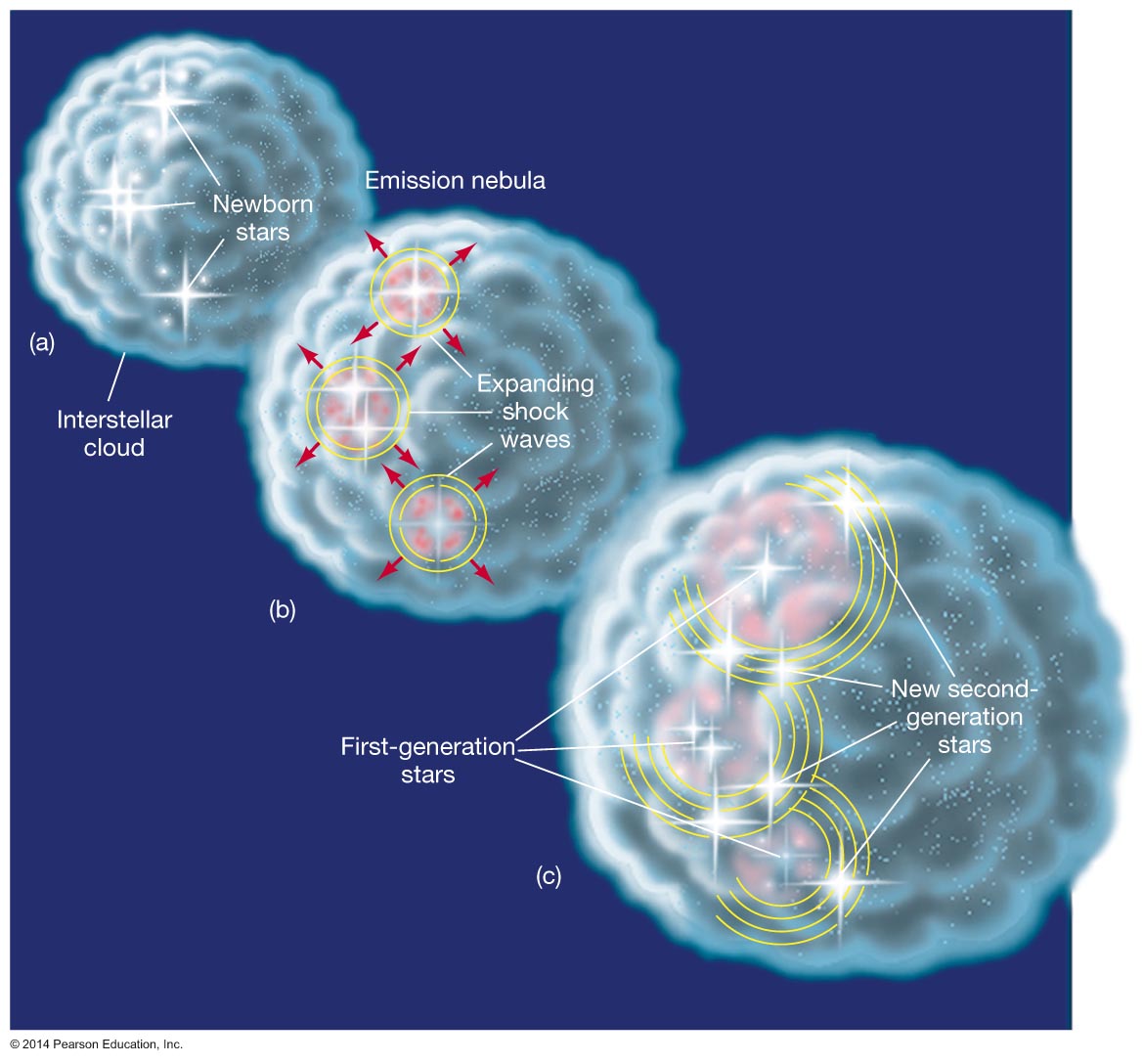Star-Forming Regions
|
| Star Formation |
|---|
| A Traumatic Birth |
|
|
The
H-R diagram is a useful way to summarize the observed properties of prestellar
objects, just as it is for stars.
The evolution of a star can be thought of as passing through seven evolutionary stages. Star formation begins when gravity begins to dominate over heat, causing a cloud to lose its equilibrium and start to contract. |
 Path of Newborn Star |

The cloud might contain thousands of times the Sun's mass.
|
|  |
| Approximate Time to Next Stage: | |
| Central Temperature: | 10 K |
| Surface Temperature: | 10 K |
| Central Density: | 109 particles/m3 103 particles/cm3 |
| Diameter: | 1014 km |

| Approximate Time to Next Stage: | |
| Central Temperature: | 100 K |
| Surface Temperature: | 10 K |
| Central Density: | 1012 particles/m3 106 particles/cm3 |
| Diameter: | 1012 km |
| Approximate Time to Next Stage: | |
| Central Temperature: | 10,000 K |
| Surface Temperature: | 100 K |
| Central Density: | 1018 particles/m3 1012 particles/cm3 |
| Diameter: | 1010 km |
| Approximate Time to Next Stage: | |
| Central Temperature: | 1,000,000 K |
| Surface Temperature: | 3000 K |
| Central Density: | 1024 particles/m3 1018 particles/cm3 |
| Diameter: | 108 km |
| Approximate Time to Next Stage: | |
| Central Temperature: | 5,000,000 K |
| Surface Temperature: | 4000 K |
| Central Density: | 1028 particles/m3 1022 particles/cm3 |
| Diameter: | 107 km |
|
 |
| Approximate Time to Next Stage: | |
| Central Temperature: | 10,000,000 K |
| Surface Temperature: | 4500 K |
| Central Density: | 1031 particles/m3 1025 particles/cm3 |
| Diameter: | 2 x 106 km |
|
 |

|
|
 IR Image near Orion with numerous brown dwarfs |
|
 Trifid Nebula (M20) Illustrates birth phases |
|
 Generation of Star Formation |
|
|
|  Star formation in Orion Nebula |